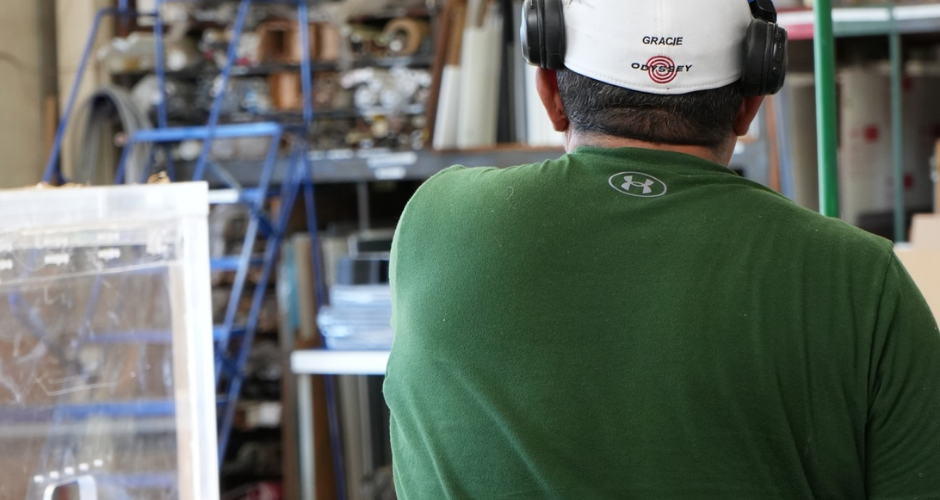How Technology Is Making Plastic Fabrication More Eco-Friendly
- Revvia Assistant
- 2 days ago
- 3 min read

For years, plastics have been both a cornerstone of innovation and a topic of environmental concern. But the narrative is changing, fast. Thanks to modern technology, plastic fabrication is evolving into a cleaner, more efficient, and eco-conscious process. From advanced recycling methods to smarter production systems, the industry is proving that performance and sustainability can go hand in hand.
Whether you’re an engineer, designer, or business owner looking for the best plastic manufacturer in San Diego, understanding how technology is reshaping the environmental footprint of fabrication can help you make more responsible and future-focused choices.
Smart Manufacturing Reduces Waste and Energy Use
One of the biggest technological shifts in plastic fabrication is the move toward precision-driven manufacturing. With the help of computer-aided design (CAD), CNC machining, and automation, today’s plastic fabricators can achieve an unprecedented level of accuracy. This means materials are used efficiently, and production waste is dramatically reduced.
Traditional fabrication methods often involved manual cutting, trimming, and forming, which could lead to errors and leftover scraps. Now, advanced machines powered by digital blueprints ensure that every cut and curve is exact. Less material waste means fewer resources consumed and less landfill contribution.
Additionally, many of the best plastic manufacturers in San Diego are integrating energy-efficient systems into their operations. High-efficiency equipment and optimized workflows help reduce power consumption, while real-time monitoring allows for better control over production inputs and environmental outputs.
This combination of precision and efficiency doesn’t just lower costs, it drives sustainability across the board.
Recycling and Reuse Technologies Are Closing the Loop
One of the most transformative advancements in recent years is the rise of circular manufacturing. Instead of treating plastics as single-use materials, modern plastic fabrication facilities are finding innovative ways to recycle, repurpose, and reintegrate waste into new products.
New sorting and processing technologies can now separate and clean various types of plastics with high precision, turning what used to be “scrap” into valuable raw material.
Some facilities are even using chemical recycling, which breaks down plastics at the molecular level so they can be reused as if they were brand new.
This closed-loop approach is helping manufacturers reduce dependency on virgin materials and minimize waste generation. For example, acrylic and polycarbonate, two common materials used in architectural and industrial applications, can now be recycled more effectively, ensuring their lifecycle continues without compromising quality or safety.
Forward-thinking plastic fabricators are not only recycling in-house waste but also sourcing post-consumer plastics, giving discarded materials a second life in construction, signage, displays, and industrial components.
Sustainable Material Innovations Are Leading the Way
Eco-friendly fabrication doesn’t stop at recycling, it starts with smarter material choices. Researchers and manufacturers are developing advanced polymers and bio-based plastics designed to minimize environmental impact while maintaining performance.
Some of these newer materials are made from renewable sources like corn starch or cellulose, offering similar durability and versatility to traditional plastics but with a reduced carbon footprint. Others are engineered to be more easily recyclable or biodegradable, simplifying waste management at the end of their lifespan.
The best plastic manufacturer in San Diego knows that sustainable innovation starts at the source. By using cleaner materials, improving quality control, and refining fabrication techniques, they’re setting new standards for environmentally responsible production.
Additionally, sustainable fabrication techniques such as low-emission thermoforming and solvent-free bonding processes are becoming industry norms. These improvements reduce harmful byproducts and create a safer working environment while supporting broader environmental goals.
Digitalization and Data-Driven Sustainability
In today’s manufacturing landscape, data is power, and in plastic fabrication, it’s helping drive sustainability. Smart factories equipped with sensors and software can now track every stage of production in real time.
This data-driven insight helps manufacturers optimize energy use, identify inefficiencies, and monitor emissions. It also allows for predictive maintenance, keeping machines running smoothly, preventing downtime, and extending equipment life.
Through digital twin technology, manufacturers can even simulate fabrication processes before physically executing them. This minimizes trial-and-error, saves materials, and reduces the carbon footprint associated with prototyping.
These advancements show how deeply technology is intertwined with sustainability. It’s not just about what’s being made, it’s about how it’s made.
The Future of Plastic Fabrication Is Green
As innovation continues, the future of plastic fabrication is looking brighter, and greener, than ever. With energy-efficient equipment, advanced recycling systems, and eco-friendly materials, today’s plastic fabricators are proving that environmental responsibility and industrial excellence can go hand in hand.
For companies and creators looking to partner with the best plastic manufacturer in San Diego, it’s worth seeking those who prioritize sustainability as much as precision. The path to a cleaner future is built one innovation at a time, and it’s happening right now in the world of plastic fabrication.
Ready to make your next project both strong and sustainable? Partner with expert plastic fabricators who combine cutting-edge technology with eco-friendly practices to help you build responsibly for the future.
.png)




Comments